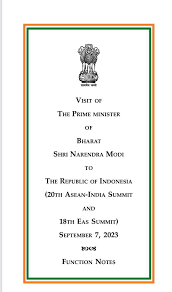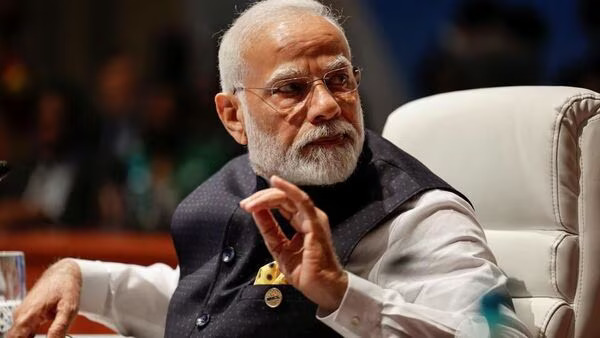The decision to print ‘President of Bharat’ instead of the conventional ‘President of India’ on the official G20 Summit invitations has generated significant attention and debate. This move, occurring just days prior to a special parliamentary session, has ignited intense political discussions and raised eyebrows among many observers.

Why is the name Bharat being evoked?
During the upcoming special session of Parliament, slated to run from September 18th to 22nd, a significant deliberation within the government is expected regarding the presentation of a resolution aimed at altering the official name of India to Bharat. Presently, the Constitution of India incorporates the dual nomenclature, referring to the nation as “India, that is Bharat…,” but there is a growing call for a more streamlined identity – simply “Bharat.”
As outlined by Article 368 of the Constitution, the central government will require a straightforward majority in both Houses of Parliament to successfully pass the resolution for this renaming from India to Bharat. Following the resolution’s ratification, the government would subsequently need to embark on the process of amending the Constitution to reflect this change. This proposed transformation in nomenclature is poised to be a subject of considerable significance and debate in the special parliamentary session.
This unfolding development aligns with the concurrent issuance of official invitations to the G20 Heads of State and ministers for a dinner event hosted by President Droupadi Murmu, who has embraced the title of “President of Bharat.” In the wake of this move, there is a level of conjecture within opposition circles, suggesting that this strategic maneuver might be driven by a desire to address potential confusion, especially concerning the Opposition alliance known as I.N.D.I.A.

What does this mean for everyone in “Bharat”?
It’s worth noting that Article 1 of the Constitution, which states, “India, that is Bharat, shall be a Union of States,” holds an interesting historical evolution. Surprisingly, the original draft of the Constitution did not initially incorporate the name ‘Bharat.’ The draft constitution was meticulously prepared by a committee under the leadership of Dr. Bhimrao Ambedkar, affectionately regarded as the architect of the Indian Constitution. This draft was presented to the constituent assembly on November 4, 1948.
Almost a year later, on September 17, 1949, Dr. Ambedkar proposed an amendment to include the name ‘Bharat’ in the first sub-clause of Article 1. This proposed amendment also entailed minor modifications to the second sub-clause, which pertains to the constituent states. This historical insight sheds light on the deliberative process and the eventual inclusion of the name ‘Bharat’ in the Indian Constitution.
Throughout history, the land we now know as India, or ‘Bharat,’ has borne numerous names, each carrying its own historical and cultural significance. The term ‘India’ itself can be traced back etymologically to ancient Greek and Latin texts that referred to the region beyond the ‘Sindhu’ river. Conversely, ‘Bharat’ or ‘Bharatvarsh’ finds mention in various ancient Hindu religious scriptures, although there may be scholarly debates about their precise origin and usage. Additionally, ‘Hind’ and ‘Hindustan,’ with their Persian origins, were inherited from the rule of Sultans and Mughals and have since become part of common parlance in multiple languages. Depending on the language, historical context, and intended message, various other names have also been associated with this land.
Each of these appellations carries the weight of a rich history and embodies a vision for the present and future of the “imagined community” that is the modern nation-state. Language is not merely passive; it serves as an active conduit for conveying profound thoughts and ideas. The politics of naming has played an integral role in our nation-building project, as evidenced by the decision of our constituent assembly to officially recognize both ‘India’ and ‘Bharat’ as the names of the country. This dual nomenclature appears to be a deliberate effort to acknowledge our past glory while charting a path of pluralism for the present and future.
At the birth of our independent nation, our founding leaders successfully secured constitutional recognition for both names, allowing them to coexist. Fast forward nearly seven decades, and this age-old debate has resurfaced, sparking speculation about a potential ‘name change’ for the country. With general elections looming on the horizon, the timing of this discussion raises suspicions and begs the question: Should the name of a nation, deeply ingrained in the collective consciousness of over 1.4 billion people, be subject to political expediency?












